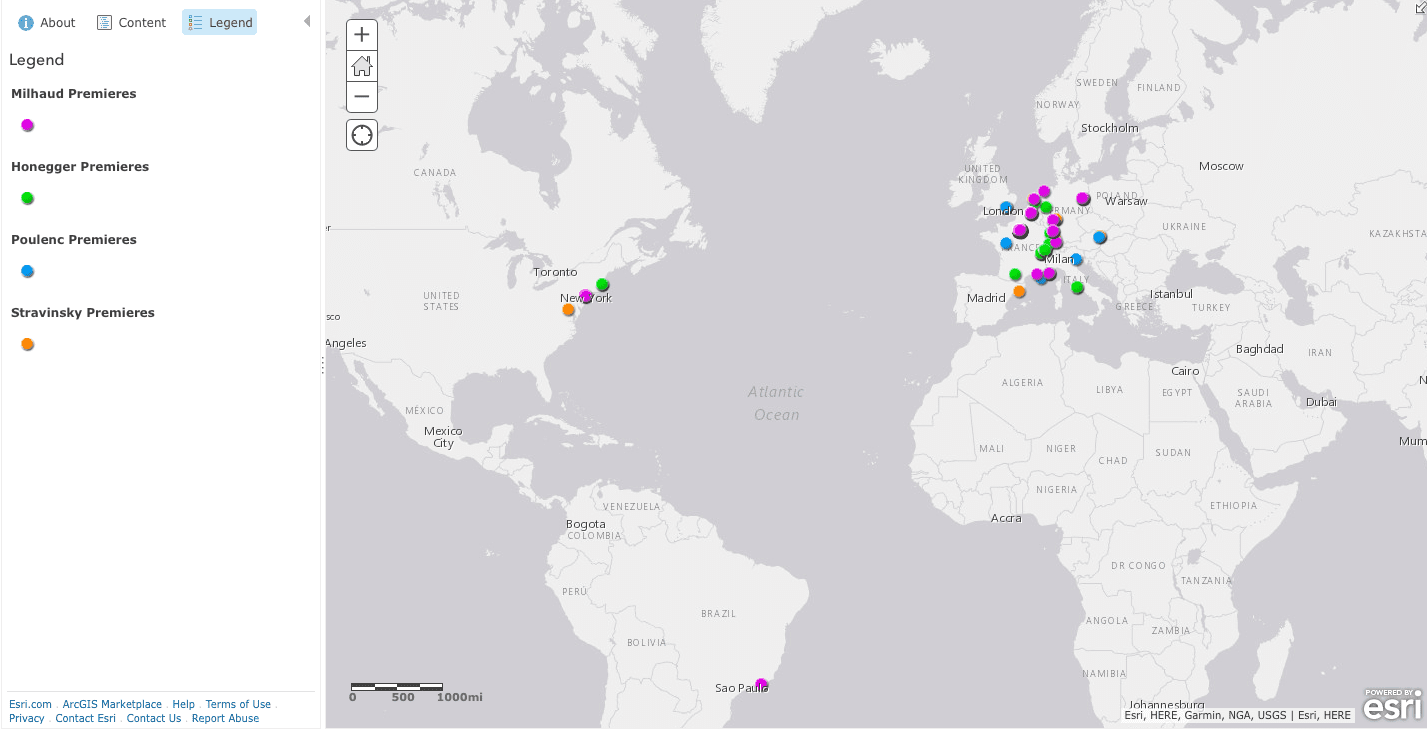This morning, we for the first time gave an introduction of our project in a room filled by faculty and students, all doing research in various areas of the humanities and social sciences.
We spent about 6 minutes talking about our project’s goals, methodology, as well as the relevance and contribution of musical geography to the field of music.
We started by giving an overview about the project as well as a very brief definition of what musical geography is.
Moreover, we explained how musical geography can help put music in a historical and spatial context through the use of mapping devices, help illustrate our findings but also uncover trends that are not necessarily evident through text only. This, consequently, can help us be more critical about our findings and see mapping as a constant learning process, which each map teaching us something new and pushing us to further our knowledge of history and literature.
Taking the example of Milhaud, who will be our main focus for this project, we will be looking at his career as a composer, and trace back his travel, musical work as well as the ways it was received across the globe. Tracing back a number of his premieres and displaying it into a map allowed us to realise how global Milhaud was, as his scope of performance and style, as opposed to most composers, wasn’t limited to France (Paris mainly) but instead reached further landscapes and audiences. Mapping therefore has helped us raised questions such as why was Milhaud more globally represented? Did it have something to do with his relationships ? personal choices as an author ? Strategic reasons (ex: financial) ?
As we can see, there are a lot of questions that maps alone can raise and which could all lead to new areas of research and discovery (considering both spatial and historical contexts). This, in my opinion, is what is so special about musical geography.
I’ll finish this post by including an example of our most recent map, which shows the premieres of Milhaud, Poulenc, Stravinsky and Honegger with distinct colors for each composer.
